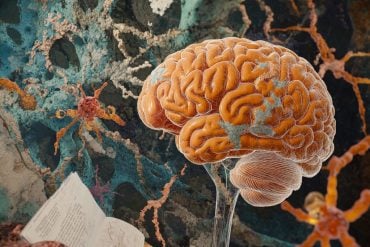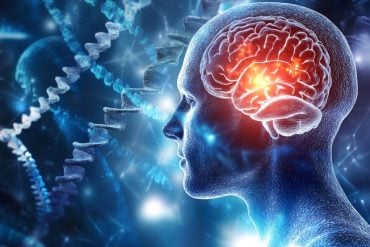Summary: Researchers revealed how the fruit fly brain transforms memories of past rewards into actionable behaviors, guiding the fly to food. A key brain region, the mushroom body, integrates olfactory information and assigns values to odors, but the link to motor actions was unclear.
This study identifies a cluster of neurons, termed UpWiNs, that process these signals, leading the fly to move upwind towards the source of attractive odors. These insights offer a deeper understanding of how memories influence behavior through intricate neural circuits.
Key Facts:
- Fruit flies turn upwind to trace odors, guided by memories of past rewards.
- The mushroom body in the fly brain processes odors, assigning them positive or negative values.
- A newly identified cluster of neurons, UpWiNs, plays a pivotal role in converting these odor memories into upwind movements.
Source: HHMI
New research by Janelia scientists and collaborators at the University of North Carolina at Chapel Hill shows how a cluster of neurons in the fruit fly brain transforms memories about past rewards into actions, helping the fly navigate to find food.
Like other insects, flies turn into the wind, or upwind, to locate the source of attractive odors. The fly’s olfactory system detects and senses odors carried by the wind, guiding the fly to the reward.

In the fly, a brain region called the mushroom body processes and integrates olfactory information. Multiple compartments in the mushroom body act in parallel to assign positive or negative values to an odor stimulus, but how these signals are translated into motor actions is unknown.
The new research shows reward memories formed in different compartments of the mushroom body elicit distinct behaviors, with only some driving the fly’s upwind movement. The study identifies a cluster of neurons – Upwind Neurons or UpWiNs – that integrate inhibitory and excitatory inputs from these compartments, causing the fly to turn and move into the wind.
The new research provides insight into how learned positive and negative values are gradually transformed into concrete memory-driven actions. The UpWiNs also send excitatory signals to dopaminergic neurons for higher-order learning, according to the researchers.
These findings help to explain how parallel dopaminergic neurons and memory subsystems interact to guide memory-based actions and learning at the level of individual neural circuits.
About this neuroscience research news
Author: Nanci Bompey
Source: HHMI
Contact: Nanci Bompey – HHMI
Image: The image is credited to Neuroscience News
Original Research: Open access.
“Neural circuit mechanisms for transforming learned olfactory valences into wind-oriented movement” by Yoshinori Aso et al. eLife
Abstract
Neural circuit mechanisms for transforming learned olfactory valences into wind-oriented movement
How memories are used by the brain to guide future action is poorly understood. In olfactory associative learning in Drosophila, multiple compartments of the mushroom body act in parallel to assign a valence to a stimulus.
Here, we show that appetitive memories stored in different compartments induce different levels of upwind locomotion.
Using a photoactivation screen of a new collection of split-GAL4 drivers and EM connectomics, we identified a cluster of neurons postsynaptic to the mushroom body output neurons (MBONs) that can trigger robust upwind steering.
These UpWind Neurons (UpWiNs) integrate inhibitory and excitatory synaptic inputs from MBONs of appetitive and aversive memory compartments, respectively. After formation of appetitive memory, UpWiNs acquire enhanced response to reward-predicting odors as the response of the inhibitory presynaptic MBON undergoes depression.
Blocking UpWiNs impaired appetitive memory and reduced upwind locomotion during retrieval. Photoactivation of UpWiNs also increased the chance of returning to a location where activation was terminated, suggesting an additional role in olfactory navigation.
Thus, our results provide insight into how learned abstract valences are gradually transformed into concrete memory-driven actions through divergent and convergent networks, a neuronal architecture that is commonly found in the vertebrate and invertebrate brains.







